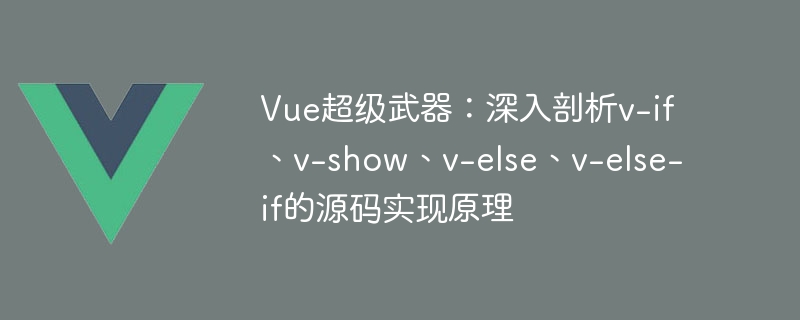

Vue super weapon: in-depth analysis of the source code implementation principles of v-if, v-show, v-else, v-else-if
Introduction:
In Vue development, we often use conditional rendering instructions, such as v-if, v-show, v-else, v-else-if. They allow us to dynamically show or hide DOM elements based on certain conditions. However, have you ever thought about how these instructions are implemented? This article will provide an in-depth analysis of the source code implementation principles of v-if, v-show, v-else, and v-else-if, and provide specific code examples.
export default { render(createElement) { if (this.condition) { return createElement('div', 'Hello, Vue!') } else { return null } }, data() { return { condition: true } } }
In the above example, we determine whether to render the
export default { render(createElement) { return createElement('div', { style: { display: this.condition ? 'block' : 'none' } }, 'Hello, Vue!') }, data() { return { condition: true } } }
In the above example, we set the display attribute of the
The specific source code implementation is as follows:
export default { render(createElement) { return createElement('div', [ this.condition1 ? 'Hello, Vue!' : createElement('p', 'Hello, World!') ]) }, data() { return { condition1: true } } }
In the above example, we determine the content to be rendered by judging the value of this.condition1. If this.condition1 is true, render 'Hello, Vue!'; if false, render a
element and set its content to 'Hello, World!'.
Summary:
By in-depth analysis of the source code implementation principles of v-if, v-show, v-else, v-else-if, we can better understand the working mechanism of these conditional rendering instructions. v-if dynamically creates or removes DOM elements by determining whether an expression is true or false, and v-show hides or displays elements by setting their styles. v-else and v-else-if are implemented through Vue's compiler and are used to render DOM elements in the else branch of an if directive or else-if condition.
We hope that the introduction in this article can help readers better understand and apply Vue's conditional rendering instructions and further improve development efficiency.
The above is the detailed content of Vue super weapon: in-depth analysis of the source code implementation principles of v-if, v-show, v-else, v-else-if. For more information, please follow other related articles on the PHP Chinese website!




